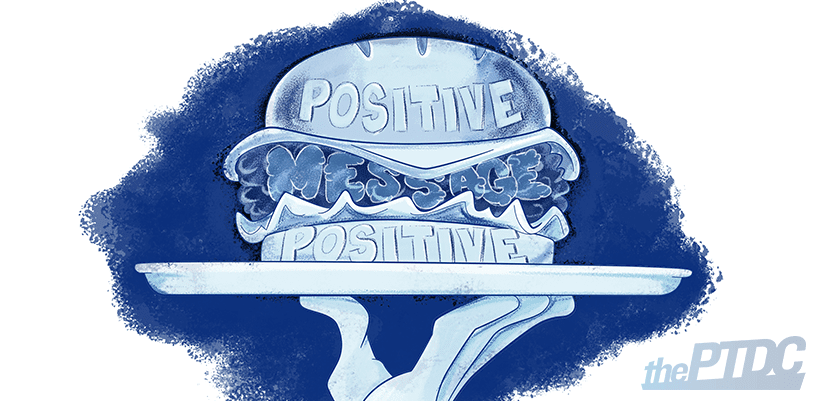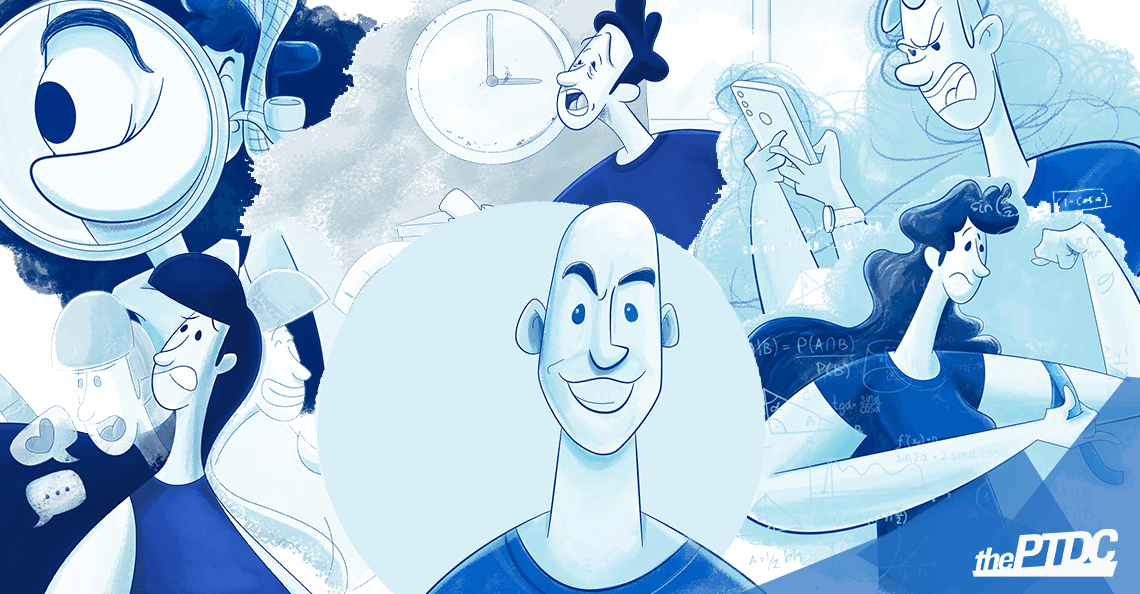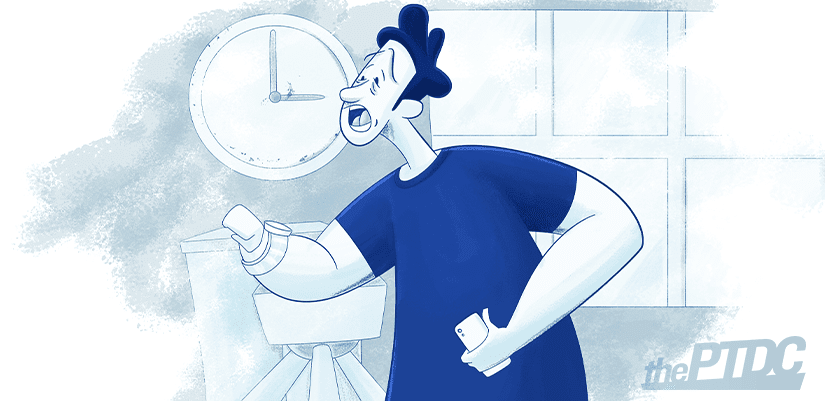When I started as a personal trainer, social media wasn’t a thing, smartphones didn’t exist, and Game of Thrones was just a book for nerds.
That’s almost two decades ago.
Today, people become Instagram fitness celebrities by posting half-naked pictures of themselves eating a gluten-free muffin, run their business from the palm of their hand, and can name their pet hamster Hodor and everyone will get it.
You know what hasn’t changed? People.
People are still people.
They’re rad, sad, stubborn, silly, anxious, pompous, friendly, enthusiastic, type-A, type-B, introverted, extroverted, and frankly I dig it all.
I enjoy the cornucopia of personalities and backgrounds I’m exposed to every day.
With a few exceptions.
By now I’ve worked with thousands of clients and can honestly say there have only been a handful I have dreaded working with. You probably recognize them and can commiserate with me.
But I hope you can also learn from me how to deal with them. How to work around—or work with—their attitudes. It’ll make them better clients and, trust me, make you a better trainer.
It took me years to learn some of this. Take five minutes and learn from me.
How to Deal with Difficult Personal Training Clients: Five Strategies
1. Help Mrs. Vague get focused
Some people say they have a fitness or health goal, but they sure do pick a meandering path to reach it. And of course never get there.
They’ll show up at the gym, but then do a few of these, a smidgeon of those, a couple of whatchamacallits, and a handful of thingamabobbers.
In other words: There’s little intent in their training. They have trouble committing to an actual, measurable, purposeful goal.
This drives me bonkers.
You should force—you heard me, force—your clients to be specific with their goals. Having a realistic and tangible goal in sight helps nudge them toward intent and purpose.
It keeps people invested in their workouts and training. And guess what? That’ll help both you, the trainer, and the client. Win-win, everyone’s happy.
I’ve heard it all during goal setting: too vague, too unrealistic, or downright batshit crazy.
Need some examples?
- Too vague: “I want to lose weight.” Or “I want to get stronger.”
- Too unrealistic: “I want to look like Killmonger by next month.” Or “I want to deadlift a bulldozer.”
- Too batshit: “I want to pet a unicorn.”
We’ve all dealt with the “too vague” client, right?
Losing weight and getting stronger—both are splendid goals. But that’s about as helpful as saying “I want food” when my wife asks where I’d like to go out for dinner.
When you hear vagueness, dig deeper. Go full Oprah.
- “Why do you want to lose weight? Why do you want to get stronger?”
- “What’s prevented you from achieving those goals in the past?”
- “Once you hit those goals, how will that make you feel?”
Follow-up questions reveal quite a bit—to you and to the clients, about themselves. It’s quite possible they’ve never asked themselves these questions.
You might learn that, say, a previous trainer discouraged them with difficult exercises, so you’d be wise to keep your program simple. By admitting they’d been intimidated, maybe they’ll learn to push back.
With your questions, the vague client will soon understand that they need to latch onto a concrete goal.
I’m a champion of this concrete approach:
Set performance-based goals.
Here’s an example. When I hear a new female client fall back on the “I want to lose weight” line, I’ll encourage her to pick a performance-based goal to focus her efforts. Could be one of these:
- Perform their first strict, unassisted chin-up.
- Deadlift their body weight for five reps.
- Farmer Carry (both hands) half their body weight for 50 yards.
- Perform 10 strict push-ups from the floor.
- Beat Wonder Woman in a vertical jump test.
Okay, that last one is both unrealistic and batshit. But the point is I don’t much care what the goal is.
Something—anything—that’s performance-based is a game changer.
Setting a specific goal strips away superfluous dreaming that wastes time. More important, it gives people purpose.
It provides a WHY for every exercise you program.
With a goal set, each exercise, exercise order, load, set/rep scheme, and rest period are curated for the sole purpose of attacking that goal.
To steal a famous quote from strength coach Dan John:
“The goal is to keep the goal the goal.”
The beauty part: All the effort expended in trying to reach that goal will result in hitting their vague aesthetic goals anyway.
If they marry that goal—commit to that goal—they’ll lose weight. They’ll be stronger. They’ll be healthier. More confident. Happier.
When the goal is specific, so is the training: Either the training program is bringing them one step closer to hitting their goal, or it’s not.
It’s clarifying.
I was speaking recently with a new client who’d had lackluster results with several trainers.
She wondered if I could do any better.
We had the goal talk, she was (shocker!) vague, and then she asked me, “When do you think I will see results working with you?”
“If you kinda-sorta train,” I responded, “you’ll kinda-sorta get results.”
This was my not-so-subtle nudge about having intent and direction.
In other words, it was up to her.
You get out of training what you put into it. As someone’s coach I’ll be there to support them and guide them as much as possible.
But it starts with intent. They have to take ownership of that first.
2. Teach Mr. Late how to tell time
Personal training is a service industry.
Meaning someone pays you for your time.
One-on-one training sessions are dictated by the clock. You start a session with one client and 30, 45, or 60 minutes later the next client shows up for their session.
A chronically late client can blow up your entire schedule.
I know that life sometimes gets in the way. Clients occasionally are going to be late—daycare issues, work, car trouble, random attacks from ninjas—and I rarely make a big deal out of it.
They know I have others coming in after them. We just adjust their session accordingly.
But when a client is routinely late—and it’s affecting their results—I’m up-front, and I set the boundary. Politely. With a sandwich of positivity.
First, I’ll say that I’m happy they’ve taken the hardest step: making fitness a priority. That’s positive reinforcement.
Next comes the meat of my message. Something like, “But I have noticed a trend where you’re consistently late. A few times here and there is no big deal. But when it becomes routine, it can really hamper the effectiveness of our session and slow down results.”
Then I top it with another layer of positivity: “Is there anything I can do to help you be more accountable to showing up for your sessions on time?”

Did you hear that? How I said “you” and “your”?
This approach is effective because (1) it’s not aggressive; (2) it sprinkles in a touch of empathy, always a good thing; and most important, (3) it stresses that it’s on them to make the change.
That kind of behavior-changing sandwich usually goes down easy.
3. Educate Mrs. Bulk-a-phobic
The clients in this category can be any gender. We’ve all heard this eye-roller: “I don’t want to get too big and bulky.”
It usually comes when explaining some variation of squats or deadlifts.
“I can’t do that. I’ll get too big!”
Early in my career, especially with women, I’d always try to “win” this argument.
I’d say something snarky like, “You worrying about getting too big lifting a barbell a few times is like me worrying about driving because I don’t want to turn into a NASCAR driver.” I might have added a dismissive snort.
I’d then wax poetic about testosterone levels and how they don’t have the hormonal profile to get big, and shared all the knowledge brimming from my brain.
Never worked. Of course I was correct, but snark is no way to build a meaningful rapport with a client.
Instead, again, I’ve learned to dig deeper. To ask questions.
“Why do you feel strength training will make you big and bulky?”
“Is this something that happened in the past?”
“What exercises in particular do you feel cause this?”
Their answers, and the ensuing informed discussion, will relieve any concerns.
Hey, maybe it’s not their fault. They may be repeating what a former trainer told them. Or maybe they never took the time to learn, or they weren’t shown proper technique.
It’s more fruitful to take the time to ascertain why someone thinks the way they do rather than snarkily chastising them just to prove them wrong.
4. Defuse Mr. Complainer
I once had a client who complained about everything. Every exercise hurt or was too hard.
Goblet squats: “OMG, too hard.”
Cable pull-throughs: “Are you serious?” Usually said with an eye roll.
Pallof presses: “Ugh, again?”
Breathing: “Aww, come on—do I have to?”
I reached the end of my rope after they complained about the absurdity of performing a dumbbell lateral raise (is there any exercise more innocuous?) I cheekily responded:
“You know, lifting weights isn’t supposed to tickle.”
Okay, you say, maybe that was a little snarky, and snarky isn’t good, right? But every coach has his limits.
But I’m also smart enough to listen to smarter people, like psychologist Lisa Lewis, Ed.D., whose doctorate is in sports psychology and whose husband happens to be me. She wrote an entire article about how to deal with negative clients, and she likened dealing with them to an aikido match. Defend yourself without injuring them.
Redirect their complaint by restating it: “What I hear is that you’re not happy with the progress you’ve made with these exercises. I get it, and you’re right. Why do you think you haven’t hit your marks?”
You’ve acknowledged the complainer’s premise and sidestepped debate. Now it’s on them to figure out why something isn’t working, and what can be done to fix the problem.
5. Cure Dr. Clueless
I hear stories about clueless clients all the time. I’ve changed my reaction to them.
Here’s an example from a friend in our industry. A client in his strength training class came up and said he’d be taking a month or two off from class so he could “get some of this weight off.”
Which, we all know, is counterintuitive.
“I’m gonna start taking spin class again,” he says. “It really helped me lose weight.”
My friend replied: “Well, have you done anything to change your eating habits over the last month?”
No, the client said.
“When you were taking spin, what did your diet look like?” my friend asked.
“Well, I was tracking calories and writing down everything I ate.”
“So,” my friend said, “you think the spinning is what helped you lose weight?”
Crickets.
On top of all this, the client sleeps horribly due to four-year-old triplets—and he’s a dietitian!
My friend said he told the guy that three days of spinning would be equivalent to pouring gasoline on the hormonal firestorm his body was currently in, and on and on, dropping knowledge because he could.
I listened to the story and nodded my head—because 20 years ago, I, young whippersnapper Tony, would have handled the clueless client the same way. I would’ve defaulted to an aggressive, “your-approach-is-dumb” attack.
Now? Present-day Tony, older and smarter, “of courses” people to death. Here’s what I told my friend to say next time he faces a client who clearly is misinformed:
“Of course.
“Of course you’d want to go back to spin class again. You enjoy it and it seemingly helped you lose weight. And of course you want to go back to the same classes because they’re familiar and comfortable and not so intimidating.
“However, I do feel there’s a more efficient way for you to attain your goals and make them stick.
“You want two months? Give me those 60 days instead. Let me take the reins. Do what I say, learn, try something different. If you don’t feel better after 60 days and feel you haven’t made progress, I’ll buy your next spin package.”
That should do the trick. See what I did there? It works in many instances.
Instead of berating or guilting a fat-loss client who ate a bowl of Golden Grahams before bed (“You’re weak” or “I guess you don’t want it bad enough”) I’d opt to “of course” them.
“Of course you want to eat Golden Grahams before bed. They’re delicious. However, let’s see if we can come up with some healthier alternatives together that may be a better fit for your goals.”
What about the client who incessantly skips workouts?
“Of course you’d rather sit at home and watch Netflix. Did you see The Queen’s Gambit yet? It’s amazing! Also, I bet your couch is a helluva lot more comfortable than a set of deadlifts. However, neither is going to help you hit your goal. Let’s see what we can do to prioritize your sessions more.”
Or, what about the client who wants to give the latest fad diet a try?
“Of course you want to try keto. It’s all the rage right now and everyone is doing it. If it’s sustainable and matches your lifestyle, I see no reason why you shouldn’t give it a go. However, if after two weeks of not having carbohydrates, your response is to punch your spouse in the throat for saying ‘Good morning,’ then we’ll likely need to have a talk.”
By leaning in and recognizing why someone would choose to do what they do, you open up the doors for change to actually happen.
Being a curmudgeon won’t work. Offering solutions and alternatives just might.
Try it.
I think you’ll be pleasantly surprised.
















